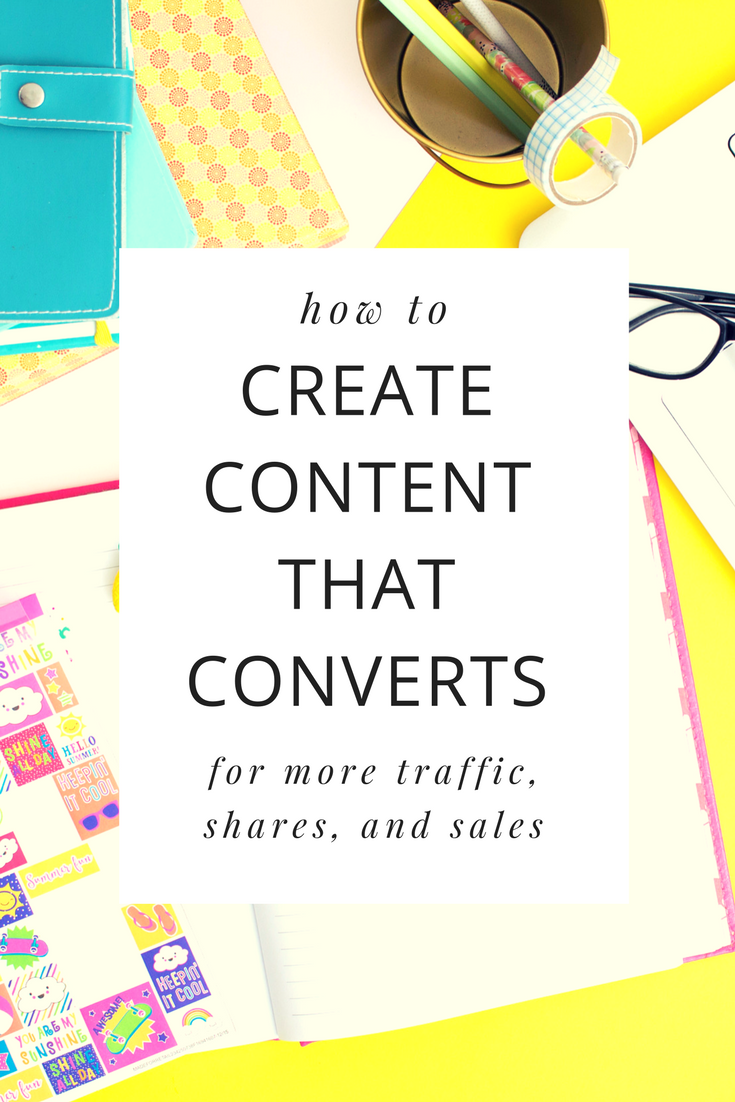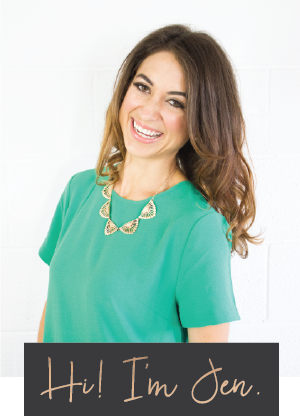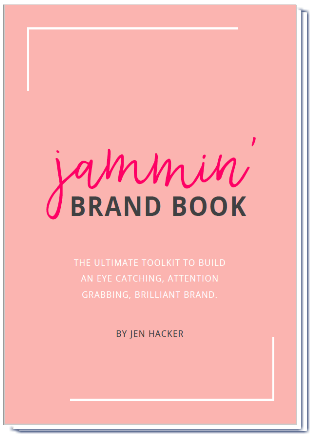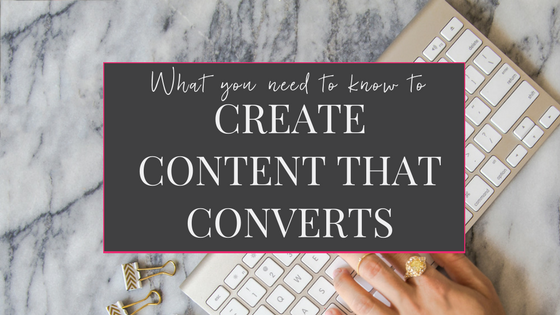
Crickets. It’s the sound we all fear the most. You create something you feel great about and then receive little traffic, few likes, and no additional sales.
When you sit down to create you’re hit with a blank screen and no idea what words or images to fill it with. Most brand owners wouldn’t also consider themselves to be professional content creators. Yet, here you are, tasked to write emails, blogs, create social media posts, and design advertising for your brand. And that’s just the start. It’s enough to dig up the biggest doubts in anyone.
Here’s the good news.
Creating content for your brand doesn’t have to be a guessing game. In order to connect with your customers, the secret is to know how to deliver them the right message at the right time in the right place. This is what’s going to convert them from might-be buyers into raving fans. And, with the right system in place, you’ll know exactly how to do this.
Download this free Content that Converts template, and I’ll talk you through how to use it in this post. By the end, you’ll have a system and a tool to help you create content that gets traffic, comments, shares, and most importantly sales for your brand – without having to be a professional writer or saleswoman.
Sound good? Let’s do this thing.
4 Steps to Creating Content that Converts
1) Decide who the heck you’re trying to reach
First things first, you need to know who you’re trying to reach. There are a lot of people in the world but quite honestly, we don’t care about most of them – at least when it comes to our brands. We care about connecting with the right people and that group is going to be a lot more niche. You might have heard this referred to as identifying your target market or target customers.
The reason we need to take this step first is because it’s going to influence how we write and communicate. Think about it. In life, we generally don’t talk the same way to every person. For instance, if your best friend asks how you’re doing you’ll probably share different information than what you would share if your grandma asked the same question. You modify what you communicate in order to appeal to the person with whom you’re talking.
Now let’s apply that concept to a business scenario.
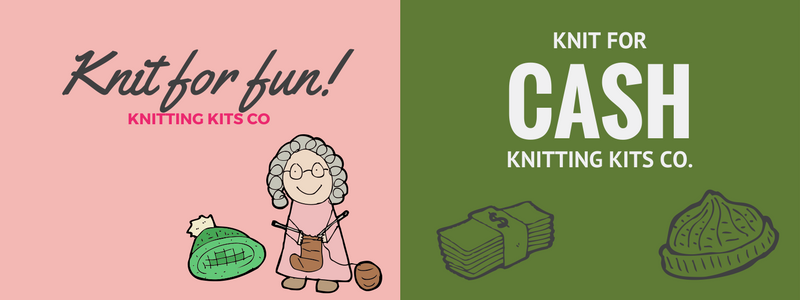
Let’s say you sell kits that teach people how to knit. Your target customers are empty-nest moms who want to learn a new hobby. You want to appeal to their nurturing side and make knitting something fun and not intimidating to try. But what if your target customers were young men who wanted to build small businesses around knitted items? In that case, you would want to appeal to their business side and talk about your kits as a way to make money. See how your communication changes depending on who you want to reach?
I’m not going to into much more detail here. However, if you need help figuring out who your target customers are, I definitely recommend reading this post.
2) Know what to say and when to say it
Once you’ve determined who your target customers are the next step is to segment them by the kind of relationship they have with you.
Not all customers are the same. Some customers haven’t yet discovered you. Others are long time loyalists. And most will fall somewhere in between. This spectrum is often referred to as the customer decision journey. It’s the series of stages your customers go through in their decision to buy from you and the questions and concerns they face along the way. Your goal is to know what to say to your customers at each stage in order to answer those questions and alleviate those concerns so that they can continue on their journey.
This is where that system and tools I promised earlier come into play. So let’s talk through what to do.
First, I need you to download this template.
Ok, open your template and look across the top.
Here you’ll find written 5 of the most common stages consumer go through in their journey. Below is a brief explanation of each.
- Awareness: Do your customers even know your brand exists?
- Consideration: Who else are your customers considering buying from?
- Purchase: Are your customers convinced to buy from you?
- Referral: Do they have a reason to tell other people about you?
- Fan: Is there a reason to keep your customers coming back?
Below each explanation is a goal. Remember, the aim of your content is to push people along in their journey so that they not only become customers but also advocates of your brand. The goal at every stage is to get them to the next step.

Under the goal statements you’ll find an area to write in customer insights. This where you write out the questions and concerns you believe your customers face at every stage that prevent them from moving forward. You’ll find examples in the template but go ahead and write in the insights specific to your brand.

Next you’ll find an opportunity to write your response. This is what you need to communicate in order to answer the questions and alleviate the concerns you’ve identified.

3) Choose where to say it
Great so now you’ve figured out who you want to talk to and what they need to hear from you. The next step is to decide where you are going reach out to them.
If we really start to think about it, there are a endless ways we can communicate with our customers. We have social media, email, blogs, video, and our packaging just to rattle of a few.
For that reason, and to keep things from getting overwhelming, we’re going to pick out the ones we want to use and decide how we want to use them. Our system and tool are going to help us do this.
Let’s go back to our templates.
You’ll find the next row is labeled channels. Here you want to write down the places where you want to communicate with your customers at each stage.

Looking at your awareness column as an example, ask yourself, where can I tell people about my brand who have never heard of me before? This means you don’t have their email address, they aren’t following you on social media, and they haven’t yet made it to your website.
However, they might find you through paid ads like Facebook ads, places like Pinterest where you don’t have to be a follower to see someone’s pins, and press articles. For that reason, these are good channels to put in that column.
Once you’ve completed the exercise for the awareness column go ahead and repeat it for every stage.
4) Ok, time to go ahead and say it!
At this point, you’re ready to brainstorm actual content ideas. You’ll find a place to do this in the last row of your template. Your ideas should address the questions and concerns you identified earlier and suit the channels where the messages will be delivered.

Congratulations! What you’ve just figured out is how to most effectively communicate to convert your customers! From here you’re ready to produce and publish your content.
Conclusion
At the end of the day, we all have the ability to be great content creators. The key thing to keep in mind is it’s actually not about us at all. It’s about our customers. The best thing we can do is to get to know them and anticipate their needs. Then when we decide to reach out to them we know exactly the right thing to say.
And if you remember nothing else, at least remember this – Right message, right time, right place.
Now off to you! What questions can I help answer? Drop ‘em below.
A toast to you,
Jen

